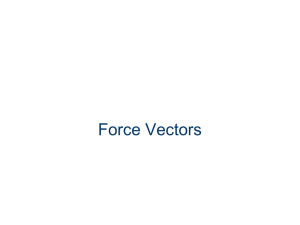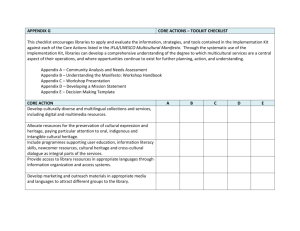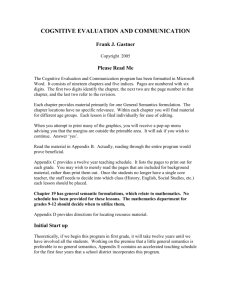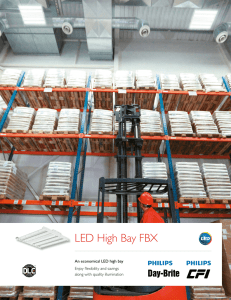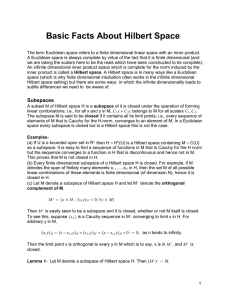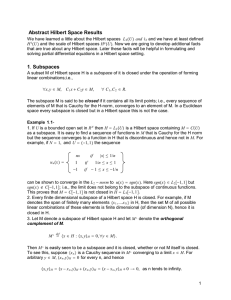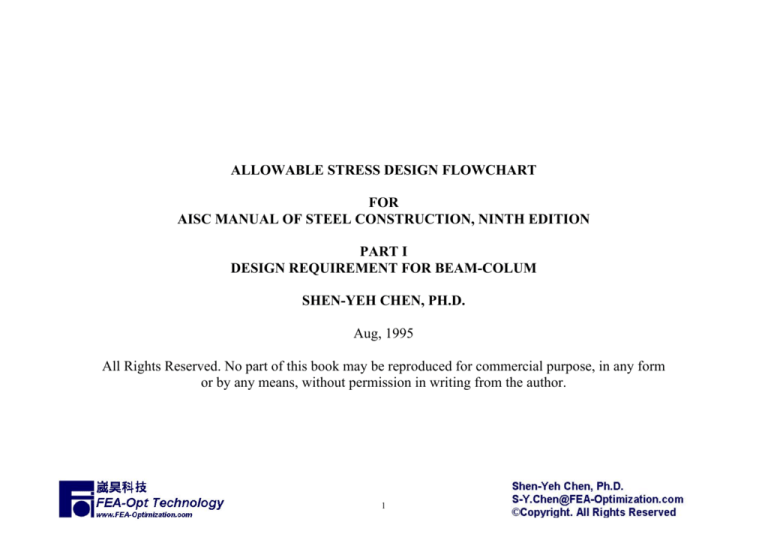
ALLOWABLE STRESS DESIGN FLOWCHART
FOR
AISC MANUAL OF STEEL CONSTRUCTION, NINTH EDITION
PART I
DESIGN REQUIREMENT FOR BEAM-COLUM
SHEN-YEH CHEN, PH.D.
Aug, 1995
All Rights Reserved. No part of this book may be reproduced for commercial purpose, in any form
or by any means, without permission in writing from the author.
1
DISCLAIMER AND COPYRIGHT NOTICE
The author makes no warranty of any kind, expressed or implied, with regard to any text, the algorithms and the program
contained in this book. The author shall not be reliable in any event for incidental or consequential damages in connection with, or
arising out of, the furnishing, performance, or use of this text, algorithms and programs.
You may distribute this documentation for educational purpose, provided that none of the text in this documentation has been
modified or deleted. This includes, but not limited to, cover page, disclaimer and copyright notice and all remaining pages. For
commercial usage of this documentation, the reader should contact the author directly for details. If you use any information in this
documentation, you need to refer to this documentation, or the following reference
S-Y. Chen, December 1997, Using Genetic Algorithms for the Optimal Design of Structural Systems, Dissertation for Doctor of
Philosophy, Department of Civil Engineering, Arizona State University.
2
DESIGN REQUIREMENET FOR BEAM-COLUMN AND OTHER FLEXURAL MEMBERS
0. Units :
ksi (klb-in)
1. Applicable Range :
h 970
≤
tw
Fy
2. Allowable Stress
2.1 Normal Stress : member in the structure should be proportioned to satisfied the following (Ch H1.). For details of calculating
the normal allowable stress, see Appendix A.
(1) Bending with Axail Compression
Cmy ⋅ f by
⎧ fa
Cmx ⋅ f bx
+
≤ 1.0
⎪F +
⎪ a ⎛⎜1 − f a ' ⎞⎟ ⋅ Fbx ⎛⎜1 − f a ' ⎞⎟ ⋅ F
⎪
Fex ⎠
⎝
Fey ⎠ by
⎝
In general
⎨
⎪ f
f by
f
a
⎪
+ bx +
≤ 1.0
⎪⎩ 0.6 ⋅ Fy Fbx Fby
If
fa
.
⇒
Fa ≤ 015
f a f bx f by
+
+
≤ 10
.
Fa Fbx Fby
(H1-1 & H1-2)
(H1-3)
3
(2) Bending with Axial Tension
f a f bx f by
+
+
≤ 10
.
Ft Fbx Fby
(H2-1)
12 ⋅ π 2 ⋅ E
F =
2
K ⋅ lb ⎞⎟
⎛
⎜
23 ⋅ ⎝
rb ⎠
'
e
where
Cm
WITH sidesway
Cm = 0.85
BRACED AGAINST sidesway
NO transverse loading : Cm = 0.6 − 0.4 ⋅
M1
M2
WITH transverse loading
NO rotations, both ends : Cm = 0.85
.
WITH rotations, both ends : Cm = 10
Cm
can be conservatively taken as 1.0
2.2 Shear Stress :
f vy
f vx
+
≤ 10
.
FVx FVy
For shear in the y direction of W and C sections
h 380
V
≤
⇒
fv =
; F = 0.4 ⋅ Fy
tw
Fy
∑ d ⋅ tw v
h
380
>
tw
Fy
⇒
fv =
(F4-1)
Fy
V
; Fv =
⋅ C ≤ 0.4 ⋅ Fy
2.98 v
∑ h ⋅ tw
4
(F4-2)
All other conditions
⇒
fv =
V
; F = 0.4 ⋅ Fy
∑ d ⋅ tw v
5.34
⎛a
. ⇒ k v = 4.0 +
⎜ ≤ 10
2
a
⎜h
h
where ⎜
4.0
⎜ a > 10
⎜⎜ h . ⇒ k v = 5.34 + a 2
⎝
h
( )
;
and
( )
45000 ⋅ k v
⎛
when Cv ≤ 0.8
⎜ Cv =
2
⎛
⎞
⎜
Fy ⋅ ⎜ h ⎟
⎝ tw ⎠
⎜
⎜
⎜ C = 190 ⋅ k v
when Cv > 0.8
⎜ v h
Fy
tw
⎝
3. Design Requirement & Serviceability Design Consideration
(1) Maximum Deflection, for beams and girders supporting floors, roofs and plastered ceilings under maximum live-load
Δ
1
(Ch L3.1.)
≤
l 360
(2) Minimum ratio of depth to length, for beams and girders in floors
d Fy
(Ch C-L3.1.)
≥
l 800
(3) Minimum ratio of depth to length, for roof purlins, except for flat floor
Fy
d
(Ch C-L3.1.)
≥
l 1000
(4) Minimum ratio of depth to length, for beams supporting large floor area
d
1
≥
l 20
(5) Minimum Slenderness Ratio
Kl
(Ch B7.)
Design based on compressive force :
≤ 200
r
l
(Ch B7.)
Design based on tensile force :
≤ 300
r
5
4. Stiffener
See Appendix B for details.
5. Bearing Plate
See Appendix C for details.
6. Cover-Plated Beam or Stiffened Beam
(To be finished)
6


